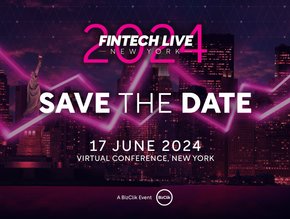Payments Providers: Delivering Flexibility to Customers

Payments providers have a lot to consider in 2024 when completing their offering. Businesses, whether large-scale e-commerce providers or SME retailers, have to meet customers' needs to maximise revenue and end-user satisfaction.
It’s up to payments providers to deliver businesses with the payments solutions they need, be it digital payments, contactless payments, embedded payment offerings or Buy Now, Pay Later (BNPL) solutions.
For payments providers, meeting the diverse needs of their clientele may make it hard to pinpoint the core qualities needed in their technology stacks and product suites.
Making transformative payments integration seamless
Maciej Pitucha, VP of Product and Data at Mangopay, believes the most important thing to consider is “seamless integration”.
Of course, this means a business’ payments transformation efforts ultimately have the potential to be, well, effortless.
Pitucha adds: “Being able to provide every part of the payments infrastructure, combined with the ability to integrate with the existing technology stack, offers a modularity that has proven powerful and appealing to our clients.”
By providing seamless integration, not only do payments providers boost their prospects of growing their customer base, but they can also help drive the development of all-in-one operational ecosystems.
“Here, businesses can not only make transactions but also access a range of financial services, including instant payments, BNPL options, real-time invoicing and quick credit access,” adds Pitucha. “For end-users, this greatly streamlines their shopping experience.”
Indeed, giving end-users the flexibility to complete a payment in the way they want is a massive advantage for businesses today, particularly when it comes to boosting acquisition and retention rates.
As Nicole Olbe, Managing Director UK at Adyen, tells us: “Consumer trends move fast, so payments providers need a solution to adapt quickly.”
So, businesses not only need to offer the payments options consumers seek today, but must also be able to adapt to new payments options that hit the market.
“It’s important to stay one step ahead by enriching the omnichannel approach with a unified commerce offering,” adds Olbe.
“Merchants need to know the customer behind each payment. With valuable cross-channel insights, merchants are connecting transactions to individuals to build a deeper understanding of customer behaviour.”
This is helped by consolidating payments into one system, which enables merchants to “easily track their business performance across channels and regions, and therefore make more informed business decisions,” according to Olbe.
“Merchants can offer their customers a more personalised shopping experience by connecting the dots between their various sales channels,” Olbe continues. “This makes it easier to cater to customer needs.”
Of course, if there’s one thing businesses shouldn’t forget, it’s that “payments are personal for people”, notes Gabriel de Montessus, Head of Global Enterprise at Worldpay.
He adds: “Whether it’s a digital, contactless, embedded or BNPL payment, it is paramount to offer an array of options to accommodate the varying preferences we see today.
“By accomplishing seamlessness across channels, consumers can feel confident that neither security nor convenience is affected by their choice of payment method.
“Ultimately, this helps retailers not just deliver faster, smarter and easier payments to their customers, but enhances their ability to understand their consumers and how they are interacting with the brand across these channels.”
For Olbe, this seamless approach “not only allows merchants to introduce new technologies but open new channels and expand to new regions more simply while empowering them to become a truly unified commerce business.”
Payments providers: Being ready for new technologies
Evidently, being ready to introduce new technologies quickly will be a key differentiator for those payments providers that succeed and those that don’t.
One such technology with game-changing potential to transform payments is, of course, blockchain technology.
For De Montessus, the potential of blockchain is tremendous.
He asserts: “Its decentralised, secure and programmable nature opens the door to many potential benefits, including enhanced transparency, reduced transaction costs, faster transaction settlement and programmability.
“In particular, smart contracts on blockchain platforms can automate complex payment processes and the open network-based approach can reduce the need for intermediaries.
“Additionally, blockchain's potential to tokenise various financial and non-financial assets opens new possibilities for fractional ownership and innovative payment and value delivery models.”
While the potential for blockchain is there, for now, barriers remain to its wider adoption, including scalability issues and a fragmented regulatory framework.
However, from De Montessus’ perspective, blockchain “continues to hold the promise of ushering in a new era of further efficiency, trust and innovation in payments.”
For providers, the key is to be ready for when blockchain technology starts spreading across the payments landscape more widely.
Mitigating fraud risk
While meeting the needs of end-users with flexible payments solutions and providing merchants with seamless integration processes may be front of mind for many payments providers, today the biggest challenge comes in mitigating the rising risk of fraud.
As payments providers leverage the latest technology to enhance their offerings, this same technology is opening new avenues which can be utilised by fraudsters to attack.
It’s no wonder Johan Gerber, EVP Security and Cyber Innovation at Mastercard, says fraudsters are “using technology in more innovative and sophisticated ways to trick consumers.”
The problem is growing, with global e-commerce fraud losses expected to top US$48bn in 2023.
Indeed, as Olbe notes: “The mainstream use of generative AI has changed the game. Use of deepfakes is just another new tool fraudsters can use against individuals as well as businesses.”
Adyen’s latest research found 33% of UK businesses had experienced a rise in payment fraud, with just 53% saying their fraud systems were effective.
This is why Olbe believes investing in AI and fraud protection systems is “more important than ever to ensure the best defence.”
Just as fraudsters may leverage Gen AI for malicious gains, so can payments providers offer defence mechanisms using the same technology.
Olbe adds: “Risk management solutions like Adyen’s RevenueProtect have a range of tools to tackle fraud. RevenueProtect follows a three-step approach – detect, prevent, respond – and uses a global, cross-industry network of data to accurately make the best risk decisions and protect customers.”
Today, there are many anti-fraud solutions available to help ensure future payments innovations are not constrained by potential security concerns.
“At Mastercard, we have a Safety Net solution that helps protect issuers and acquirers from large-scale fraud, preventing a record US$21bn being lost to fraud attacks on our network in 2023,” notes Gerber.
“Elsewhere, our AI-solution Decision Intelligence scores more than 125 billion transactions each year in real time, identifying potentially fraudulent card transactions and providing card issuers with the necessary intelligence to protect their customers.”
With a plethora of anti-fraud solutions entering the market to better protect consumers from fraud, De Montessus is confident of a secure future where fraud is on the decline.
“Compared with historically rules-based methods of fraud detection, AI and ML can build real-time models on a variety of data assets that can respond to new and emergent threats in a nearly autonomous fashion,” he explains.
“As we’ve seen in the past 18 months alone with the rapid evolution of AI systems, I fully believe that the technology has the potential to go well beyond fraud and will play a crucial role in efforts to fully optimise payments, whether that is with enhanced authorisation rates or smart routing.”
The future of payments: Sustainability front of mind
As payments technology moves into the future (as discussed with the emergence of blockchain technology), one need that payments providers will have to meet is the end-users' growing desire to adopt sustainable practices in their purchases.
According to Worldpay’s recent Future Shoppers report, almost three-quarters (73%) of all consumers said they would likely be influenced by sustainability and the environment when deciding where to shop in the coming years.
Tracking the environmental impact of spend could, therefore, become a key consideration for payments providers in the future.
De Montessus continues: “Sustainable protocols in eco-friendly payments involve minimising the environmental impact of payment processes.
“This includes transitioning to renewable energy sources for transaction validation, reducing paper usage, promoting carbon offset initiatives and alternatives to first-use PVC plastic payment cards.
“The increased adoption of biodegradable cards, as well as digital and contactless payments, will ultimately lower resource consumption in comparison to cash and plastic cards.”
What’s more, payments software providers can also look to implement digital receipt options to drive down the use of paper by retailers.
“This is something acquirers like Worldpay can offer merchants – solutions for e-invoicing,” De Montessus adds.
He concludes: “Collaboration across the industry to establish standardised eco-friendly practices and raising awareness among consumers about the environmental impact of their payment choices are crucial for fostering a sustainable payments ecosystem.”
So, by adopting the latest technologies in payments and offering leading fraud prevention services, payments providers can work towards a consumer-friendly, sustainable future for payments.
**************
Make sure you check out the latest edition of FinTech Magazine and also sign up to our global conference series – FinTech LIVE 2024.
**************
FinTech Magazine is a BizClik brand.







